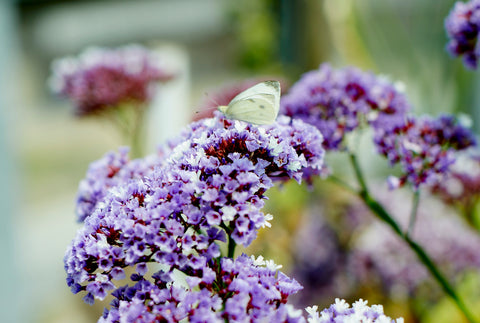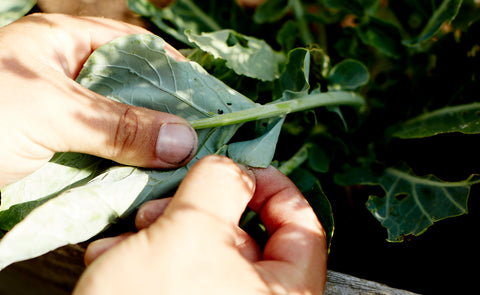How to Use Dipel

One of the most effective and easily available natural insecticides. The active ingredient of Bacillus thuringiensis var. kurstaki is derived from beneficial bacteria found in soil, on plant surfaces, and also in insects. Dipel is toxic to caterpillars, but completely harmless to humans, birds, and beneficial insects such as ladybugs and bees.
Your first line of defence should be fine netting to prevent the moths from landing and laying their eggs in the first place. Next try setting up some dummy butterflies to deter these territorial creatures from your patch. If all else fails, Dipel is a good line of defence to have up your sleeves, to spray on your leaves.
Bacillus thuringiensis, or BT, is a naturally occurring bacteria that can be used to control caterpillar damage in your patch, but it should be considered a last resort. Not because it isn’t organic, it’s just that it does not discriminate in killing all types of caterpillar species, good and bad. If you do use it realise that there will be collateral damage.

1. Identify your target, the white cabbage moth.

2. The white cabbage moth and butterfly can decimate your crops in a manner of weeks. Those invisible green monsters are the nemesis of autumn/winter brassica crops everywhere.
3. You’ve tried dummy butterflies, you’ve gone to hunt and gather all the caterpillars your eyes could see, and they have even got through your netting. Dipel is the last resort remedy.

4. Follow instructions on the Dipel packet and dilute the powder in a spray bottle. It is usually at a rate of 1g of powder per little of water.

5. Spray over the affected crops, particularly on the underside of the leave, and make sure it is not a rainy day. Give it two applications a few days apart. The BT bacteria in Dipel doesn’t discriminate between good and bad and by using it you are essentially firing bullets at all caterpillar species. Butterflies are pollinators too and make homes in our gardens. Be careful when using and always use as a last line of defence.
-
Posted in
pests

